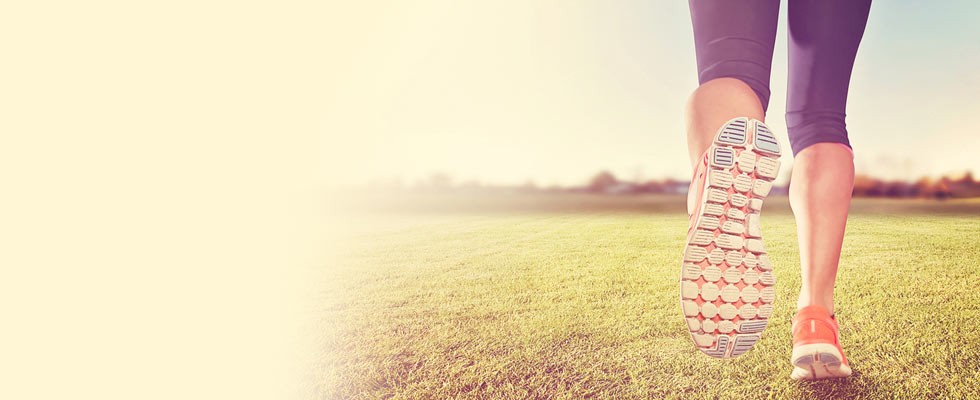 When it comes to physical activity, every little bit counts! LET'S GET MOVING month is designed to get you and your child to become more physically active. Children are less physically fit than they were a generation ago. In fact, inactive children, when compared to active children, weigh more and have higher blood pressure. Most importantly, inactive children are more likely to become inactive adults.
When it comes to physical activity, every little bit counts! LET'S GET MOVING month is designed to get you and your child to become more physically active. Children are less physically fit than they were a generation ago. In fact, inactive children, when compared to active children, weigh more and have higher blood pressure. Most importantly, inactive children are more likely to become inactive adults.
Many parents think of organized sports like soccer or baseball when they think of getting exercise. Unfortunately, practice and games once or twice a week are not enough activity to reach the recommended goal of at least 60 minutes everyday. As parents, we also can't rely on physical education in schools to provide enough activity for our children. The good news is that there are many ways that we can keep our children active everyday!
The current recommendation for children is to have at least 60 minutes of physical activity on most, preferably all days of the week. Activity can be accumulated throughout the day. Even blocks of time as short as 15 minutes or more can be accumulated throughout the day to achieve this goal. This sixty minute recommendation can be accomplished very easily by including activity into your daily routine. For example, try taking the stairs instead of an elevator or parking further away and walking to the store. Don't forget activities like raking leaves, shoveling snow or having your child clean his or her room.
Why is physical activity important for my child?
It helps to maintain a healthy body weight
It improves your child's physical skills like jumping, throwing, kicking and catching
It strengthens your child's muscles and improves coordination
It can increase your child's life expectancy
It can reduce the risk of some cancers and diabetes
Just like choosing healthy foods, children are more likely to want to be active when other family members are active too. Lead by example; show your child that exercise is important by regularly exercising yourself. Here are some activities that the whole family can do:
Take a family walk after dinner a couple times a week
Go on a family bike ride through the neighborhood
Create sidewalk art with chalk and play hopscotch
Fly a kite on a grassy field at a local school
Enjoy a playground at a school or a park
Play Duck, Duck, Goose or London Bridge
Limit time spent in sedentary activities, such as watching TV, playing on the computer or playing video games to no more than one hour a day.
All children need to be physically active. A child with a chronic health condition or disability should not be excluded from physical activities. Consult your child's doctor about which activities are safe and if the activities can be adjusted to meet your child's needs. An overweight or even a less coordinated child may feel uncomfortable in competitive sports, so activities everyone can participate in, regardless of skill, may be best. Some activities that are less dependant on skill level include:
Walking
Biking, playing outside
Flying a kite
Sledding
Bowling
Tag
Another way to increase physical activity with your child is to use it as a fun reward instead of food or money. When your child reaches a certain goal (like doing well in school) celebrate by going miniature golfing, hiking or visiting a swimming park.
Children need physical activity to build strength, coordination and confidence. All of these characteristics lay the groundwork for leading a healthy lifestyle in the future. Studies show that children who are exposed to various sports and exercise tend to stay active throughout their adults lives. Also, children who are more physically active tend to get sick less often than children who are inactive. So remember, when it comes to physical activity, every little bit counts!
Safety Considerations
Safety is always important when it comes to physical activities and your child. Make sure your child wears the proper safety gear. For example, a helmet for bike riding, skateboarding or rolling skating. Study after study will show that helmets save lives! Make sure to put sunscreen on your child when he or she is playing outside; and don't forget to bring water to drink even if your child is playing in water. Lastly, if your child is in an organized sport, ask the coach what kind of safety equipment your child may need during the season.
Water needs of the Active Child
Now is a good opportunity to teach your child about the importance of drinking water and staying hydrated while exercising. Did you know that our bodies are estimated to be about 60-70% water? Water has several important functions in the body: it helps regulate your body's temperature, it helps nutrients travel to all your organs and it also protects all of your joints. Water is equally good for your skin and helps your body process food more efficiently.
The current recommendation for children is to drink at least 4 ounces (a half-cup) of water every 20 minutes while exercising. We lose water everyday by sweating, going to the bathroom and even breathing! Explain to your child that water keeps the body hydrated and, if you don't get enough water, you may start to feel dehydrated. Signs of dehydration can include:
Feeling tired or confused
Having a headache
Having leg or stomach cramps
Feeling thirsty
This family wellness article is provided by Nourish Interactive, visit www.nourishinteractive.com for nutrition articles, family wellness tips, free children's healthy games, and tools. Available in English and Spanish.
Copyright ©2009 Nourish Interactive - All Rights Reserved.












